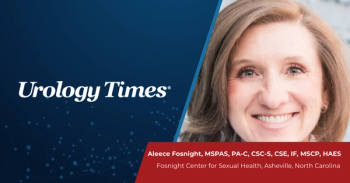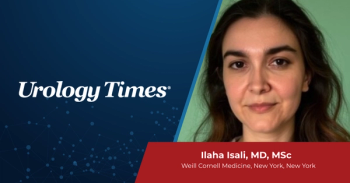
Maria Uloko, MD, on the need for better education on female sexual dysfunction
"My goal [for] a lot of the advocacy that I do is that one day [patients] don't have to do our jobs for us," says Maria Uloko, MD.
Residents across specialties reported a lack of formal training on female sexual dysfunction (FSD), which may correlate with their reported discomfort in diagnosing and managing these conditions, according to recent data published in the Journal of Sexual Medicine.1
The study was conducted as a cross-sectional survey of 128 residents in urology, obstetrics and gynecology, dermatology, internal medicine, family medicine, and emergency medicine.
Overall, data showed that 78% of residents received training in genito-pelvic pain/penetration disorder, 38% received training in hypoactive sexual desire disorder, 30% received training in female sexual arousal disorder, and 23% received training in female orgasmic disorder. The majority of respondents indicated that they were uncomfortable diagnosing and managing these conditions.
In an interview with Urology Times®, Maria Uloko, MD, discussed the implications of these findings for patient care.
Uloko explained, “On average, 1 in 4 people will suffer from pelvic pain, [and] 85 million people currently are suffering from vulva vaginal conditions like recurrent urinary tract infections, pelvic pain, overactive bladder, IC, [and] recurrent vaginal infections. These are conditions that oftentimes take 7 years to get a diagnosis—3 doctors visits. Thirty-five percent of these patients will see up to 15 doctors before they get their first diagnosis, and that's $20,000 [in] out of pocket costs.”
Uloko runs her own practice, MUMD Beverly Hills Sexual Medicine, in Los Angeles, California.
The hope, Uloko says, is that health care professionals will become more informed about conditions of FSD so that they can provide appropriate care for these patients from the start.
She concluded, “My goal [for] a lot of the advocacy that I do is that one day [patients] don't have to do our jobs for us. They don't have to go to the internet, to go find their diagnosis, to go find the doctors, to go do all those things. [The hope is that] every single doctor that graduates from medical education and training has very innate understanding of vulva anatomy, vulvar physiology, [and] female sexual dysfunction, so that we can start helping the other half of the population as well.”
REFERENCE
1. Milazzo M, Kohut-Jackson A, Negris O, et al. Assessing comfort levels with female sexual dysfunction among medical residents: a nationwide cross-sectional survey study and its implications for medical education. J Sex Med. 2025;22(5):694-700.doi:10.1093/jsxmed/qdaf071
Newsletter
Stay current with the latest urology news and practice-changing insights — sign up now for the essential updates every urologist needs.



















